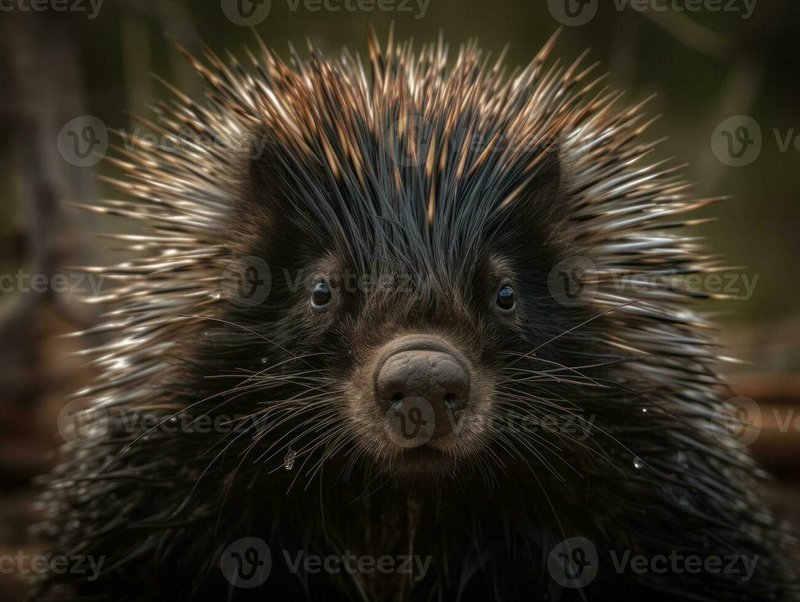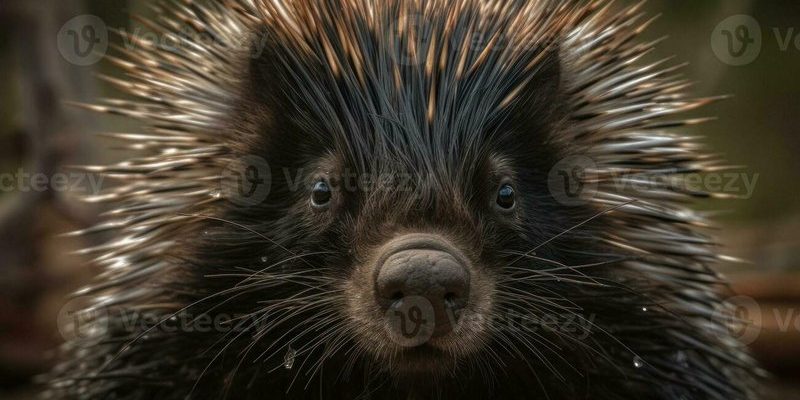
Imagine a porcupine navigating its habitat. It’s a bit like watching a child experiment with new toys. They might poke at things, figure out how they work, and learn from their experiences. Similarly, porcupines are constantly interacting with their environment, showing us that there’s a lot more going on in that spiky body than meets the eye. So, how smart is a porcupine? Let’s take a closer look at their cognitive abilities and behaviors, and see what sets these creatures apart.
Understanding Porcupine Intelligence
Porcupines belong to the family Erethizontidae, which includes various species known for their quills. While many animals rely on instinct alone, porcupines exhibit behaviors suggesting a level of intelligence that allows them to adapt to their surroundings. They can learn from their experiences, solve problems, and even seem to communicate with one another.
One interesting aspect of porcupine intelligence is their ability to navigate complex environments. When exploring their habitat, porcupines use a combination of their keen sense of smell and memory to locate food sources. They are herbivores, primarily munching on leaves, bark, and fruits. If a porcupine discovers a tasty treat one year, it’s likely to remember where it found it for the next season.
They also show a level of social behavior that speaks to their cognitive abilities. While porcupines are generally solitary animals, they can engage in social interactions, especially during mating season. They might communicate through vocalizations or scent markings, indicating that they possess a form of social intelligence.
Problem Solving Skills
You might be wondering just how resourceful these creatures can be. Porcupines aren’t just waiting for food to fall into their laps. They actively seek it out, often using problem-solving skills to get what they want. For example, when faced with a difficult food source, like a high branch with fruit, a porcupine might use its strong limbs to climb or even gnaw at the bark to access the fruit.
Their cleverness doesn’t stop there. If a porcupine encounters an obstacle, it doesn’t simply give up. Instead, it assesses the situation, figuring out whether to go around, over, or under the barrier. This type of adaptable behavior showcases a level of intelligence that many might not have expected from a rodent-like creature.
Another example of their problem-solving abilities is how porcupines use their quills defensively. They are not aggressive creatures, but when threatened, they can showcase remarkable strategy. Instead of engaging in direct confrontations, they turn away and present their quills, knowing that most predators won’t be willing to risk injury. This instinctive behavior reflects a smart understanding of how to avoid danger with minimal effort.
Memory and Learning
Memory is a crucial component of intelligence. For porcupines, their memory helps them thrive in the wild. They have impressive navigational skills when it comes to remembering the locations of food sources, shelter, and other critical landmarks in their environment.
Studies have shown that porcupines can remember the best feeding spots even after long intervals. If they’ve found a reliable food source in the past, they will likely return to it time and time again, demonstrating not only memory but also an understanding of seasonal changes and food availability.
Moreover, porcupines are capable of learning from one another. When younger porcupines observe the behaviors of older ones, they can pick up valuable survival skills, such as which plants to eat or how to navigate around predators. This learned behavior is a vital part of their social structure, emphasizing that these animals are not just lone wanderers but are interconnected in their quest for survival.
Porcupine Behavior Patterns
Understanding porcupine behavior is key to grasping their intelligence. They are primarily nocturnal, which means they are most active during the night. This behavior is not just a quirky trait; it’s a survival adaptation. Being active at night helps them avoid predators like owls and coyotes, which are more commonly hunting during daylight.
Additionally, porcupines are known for their slow and deliberate movements. This might seem like a sign of laziness, but it’s actually a thoughtful way to navigate their environments. Moving slowly helps them conserve energy and also reduces the risk of alarming potential threats.
Their social behaviors also deserve a spotlight. While porcupines are often solitary, they can still form loose associations, especially during the breeding season. Male porcupines may engage in vocal battles to woo females, showcasing not just physical presence but a certain degree of communication skill. They also mark their territory with scent, which is another indication of their awareness of social dynamics.
Emotional Intelligence: More Than Just Instincts
Porcupines, like many animals, display emotional behaviors that hint at their level of intelligence. They have been observed showing signs of distress under threat, such as puffing up their quills and making loud noises. These reactions are not just instinctive; they suggest a deeper emotional awareness of their vulnerability.
Interestingly, porcupines can also form bonds with their offspring. Mothers are known to be nurturing, providing care and protection. This nurturing behavior highlights a level of emotional intelligence that’s crucial for the survival of their young.
In some cases, porcupines can even display playful behavior. Young porcupines have been caught engaging in playful antics, like climbing and tumbling with one another. This playfulness isn’t just a fun pastime; it’s an important part of their social development and helps them learn essential skills.
Comparing Porcupines to Other Animals
When you think about intelligence in the animal kingdom, porcupines might not rank as high as dolphins or elephants, but it’s essential to consider the adaptability of different species. Compared to other rodents like rats or squirrels, porcupines have distinct ways of showcasing their intelligence.
Rats, for example, are renowned for their problem-solving skills, especially in mazes and challenges. However, porcupines excel in their environment through memory and social awareness, which are equally important traits. While rats might be quick learners, porcupines bring a different set of strengths to the table.
Similarly, when you think about how porcupines use their quills, it’s a demonstration of intelligence in how they navigate threats. Many animals rely on speed or camouflage as defense mechanisms, but porcupines have developed a unique method—using their physical attributes to deter attackers effectively.
So, how smart is a porcupine? Honestly, they’re smarter than many give them credit for. From problem-solving skills to memory and emotional intelligence, these creatures show us that intelligence comes in many forms. They navigate their environments with purpose, learn from their experiences, and display behaviors that highlight their adaptability.
Next time you see a porcupine, take a moment to appreciate its hidden intelligence. They’re not just adorable, spiky animals; they’re also remarkable survivors with cognitive abilities that reflect a unique relationship with their environment. Whether in the woods or your local zoo, porcupines remind us that intelligence isn’t always about what’s visible—it often lies beneath the surface, waiting to be discovered.

